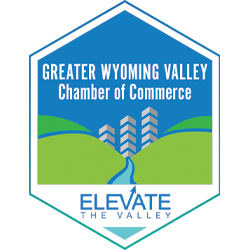
Community Corner: The Tape Art Crew Live Tape Mural
 The Tape Art Crew is transforming the Sordoni Art Gallery at Wilkes University with a temporary tape mural on the exterior brick wall of the Gallery. Community members can drop by anytime today until this Friday to see the mural evolve and talk to the artists. This Friday at 7:30 PM, be sure to see the completed mural from 5PM to 8PM at the Small Business Christmas in July & 3rd Friday Art Block and join them for a community celebratory rip-down of the mural at 7:30 PM.
The Tape Art Crew is transforming the Sordoni Art Gallery at Wilkes University with a temporary tape mural on the exterior brick wall of the Gallery. Community members can drop by anytime today until this Friday to see the mural evolve and talk to the artists. This Friday at 7:30 PM, be sure to see the completed mural from 5PM to 8PM at the Small Business Christmas in July & 3rd Friday Art Block and join them for a community celebratory rip-down of the mural at 7:30 PM.The Tape Art Crew is an evolving group of public artists founded in Providence, Rhode Island in 1989. They were the first artists to consistently use tape as a primary medium for creating collaborative, large-scale drawings and installations. As such, they have been called the inventors of Tape Art. They have created over 500 large murals and thousands of other smaller drawings on walls around the globe. The tradition of drawing collaboratively, life-sized, and with an intention of removing the work after its completion are some of the trademarks of Tape Art.
 "What we immediately loved about this medium is that as soon as you realize that you have the power to change any surface, it completely alters your worldview,” says Michael Townsend, a Tape Art Crew member for 29 years. “I think inherently a lot of people have an anxiety or a desire for a building to change or improve, and this medium gives us the chance to scratch that itch. We’re able to transform spaces and remind people that there is opportunity all around you.”
"What we immediately loved about this medium is that as soon as you realize that you have the power to change any surface, it completely alters your worldview,” says Michael Townsend, a Tape Art Crew member for 29 years. “I think inherently a lot of people have an anxiety or a desire for a building to change or improve, and this medium gives us the chance to scratch that itch. We’re able to transform spaces and remind people that there is opportunity all around you.”The artists consider each project to be a performance art piece for the community to view, voice their opinions about, and participate in. “The best way to talk about it is to imagine it as a triangle, which has the viewer, the maker, and the thing being made. We think it’s really critical for the viewer to see the full process with full transparency, so, if anyone comes to see this, nothing is hidden,” says Townsend. “When the work is done, that triangle breaks down, because we’re not making work anymore. We become viewers and it holds no interest for us as art, so, we like transferring the ownership back over to the viewers. We think of it more as a celebration, and, by removing it, they’re marking time. They’re literally owning the piece.”
 Each mural that they complete is entirely unique and adapted to the place and structure of the location. Leah Smith, who has been a Tape Art Crew member for 7 years, explains that the artists like to see how the mural location relates to the people walking by, the other walls of the building, and the view from passing cars. The team continually builds the piece and makes decisions as they go, so that the art can respond in real time to developing changes and ideas.
Each mural that they complete is entirely unique and adapted to the place and structure of the location. Leah Smith, who has been a Tape Art Crew member for 7 years, explains that the artists like to see how the mural location relates to the people walking by, the other walls of the building, and the view from passing cars. The team continually builds the piece and makes decisions as they go, so that the art can respond in real time to developing changes and ideas.“In this particular case here, the thing that is of interest is that it’s on an art gallery, and the art gallery has been flipped inside out. So, it’s really an open invitation to the public and the drawing is indicative of this building’s purpose,” says Townsend.
The artists coined the name “Car-mmunity Garden” to describe this piece, which features images of children, plants, and abandoned cars. Leah describes aspects that inspired them from the surrounding community as “the remnants of some of the older mill buildings or factory buildings that are so beautiful and indicative of something that once had a very functional purpose, and are now beautiful for a very different reason.”
Images

Powered By GrowthZone
